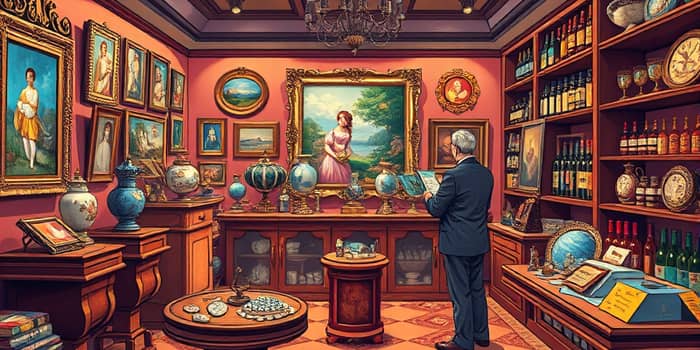
Art and collectibles hold a special place in investment portfolios, blending passion with financial strategy. These unique assets demand careful planning and informed decision-making to unlock their full potential.
Art and collectibles encompass a range of tangible treasures, from fine paintings and sculptures to rare coins, vintage wines, and memorabil ia. These items derive value from meticulous record-keeping and high-quality photographs, provenance, and the prestige of their creators.
Because they are typically illiquid and non-fungible, art and collectibles behave differently from stocks and bonds. Their worth often reflects cultural trends, scarcity, and historical importance rather than predictable cash flows or dividends.
Adding art and collectibles can enhance diversification, offering an alternative asset class strategies that may appreciate independently of traditional markets. During turbulent economic periods, they can serve as reliable stores of value.
While these assets require longer investment horizons and specialized knowledge, they offer the chance to participate in cultural legacy preservation, creating both emotional satisfaction and potential financial rewards.
Accurate records are indispensable. Whether you maintain a secure digital ledger or a printed catalog, each entry should include artist information, dimensions, medium, and acquisition cost.
Establishing a branded online presence not only streamlines management but also aids in marketing and future sales, positioning your collection for broader recognition.
Before acquiring any piece, comprehensive research is crucial. Gather market reports, attend international fairs, and network with experts to gauge demand and pricing trends.
By spreading investments across multiple collectible types—art, coins, vintage spirits—you can balance potential returns and improve liquidity options.
Valuation hinges on rarity, provenance, and current collector appetite rather than material costs. Establish a baseline with cost-based pricing—materials, labor, fees, and markup—and then refine based on peer comparisons.
For emerging artists, collaborate with reputable gallerists to align pricing with market norms. Regularly adjust your estimates by reviewing similar items at auction, ensuring your valuations reflect real-time demand.
Risk mitigation extends to rigorous documentation of every transaction, appraisal, and condition report. Thorough records are vital for insurance claims and future resale negotiations.
Implementing trust vehicles such as Charitable Remainder Trusts or Grantor Retained Income Trusts can defer or reduce capital gains taxes on appreciated assets. Gifting or donating to qualified institutions can yield substantial deductions.
Succession planning is equally important. Draft clear instructions for heirs regarding sale, donation, or retention, and appoint fiduciaries with expertise in collectibles. Such measures safeguard both value and legacy.
Personal connection often drives art purchases, yet disciplined analysis prevents overextension in illiquid markets. Balance heart and head by setting target allocations and reviewing performance metrics like the Hedonic Collectible Index.
Establish regular intervals—semi-annually or annually—for portfolio reviews, adjusting holdings based on evolving goals and market conditions.
Begin by defining your collecting focus and setting budget parameters. Establish partnerships with galleries, auction houses, and online platforms to expand outreach. Cultivate a network of advisors—appraisers, legal counsel, and estate planners—to support informed decisions.
Maintain visibility through digital portfolios and social media engagement. By combining meticulous management, strategic acquisitions, and diverse channels for selling and showcasing, you transform your collection into a dynamic component of your broader financial plan.
Ultimately, embracing robust practices and thoughtful planning ensures your art and collectibles enrich both your legacy and portfolio performance.
References













